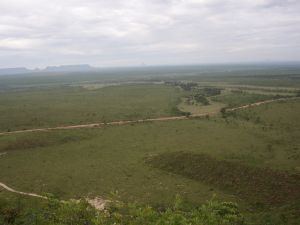
The Cerrado biome covers approximately a two million km2 area, situated between the coordinates 5˚ and 20˚ south latitude and 45˚ to 60˚ degrees west longitude, with most of its area located in the Central Plateau of Brazil. Cerrado regions extends continuously through the states of Goiás, Tocantins, Federal District, part of the following states: Bahia, Ceará, Maranhão, Mato Grosso, Mato Grosso do Sul, Minas Gerais, Piauí, Rondônia and São Paulo and, separate areas in the following states: Amapa, Amazonas, Pará and Roraima, and in the south the state of Paraná (Ribeiro & Walter, 1998). Historically, the Cerrado vegetation is conditioned by the climate, soil physical and chemical properties, fire, water table depth and more recently by human activities such as livestock, deforestation and agriculture (Ribeiro & Walter, 1998 apud FUNATURA, 2011).
